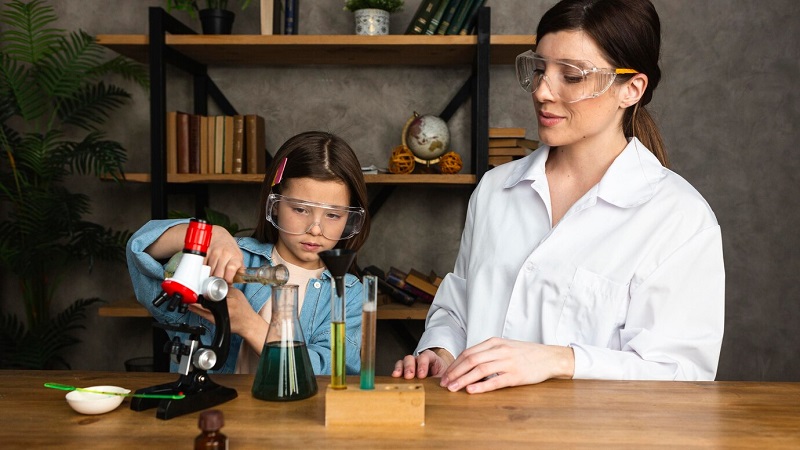We often hear that children are like sponges — soaking up everything around them as they grow. But what’s actually happening inside their brains during those early years is even more remarkable than most people realise. It’s a dynamic, fast-paced process that lays the groundwork for everything from emotional resilience to future academic success.
Understanding how young minds develop isn’t just interesting for scientists or educators — it’s incredibly useful for parents, carers, and anyone involved in shaping a child’s early experiences. Because when we understand the “why” behind brain development, we’re better equipped to support the “how”.
And that support doesn’t need to be complicated or expensive. Something as simple as quality child care in Liverpool, where kids are exposed to language, play, and secure relationships, can make an enormous difference in how a child’s brain grows.
The Brain Is Built Through Connection
From the moment a baby is born — and even before — their brain is busy building billions of neural connections. These are the tiny links between brain cells (neurons) that help us think, feel, move, remember, and learn.
During the first few years of life, these connections form at a breathtaking pace. In fact, scientists estimate that young children form over 1 million new neural connections every second.
But here’s the surprising part: these connections don’t just happen automatically. They’re formed through experiences — through every cuddle, every lullaby, every game of peekaboo. The more positive interactions a child has, the stronger and more efficient their brain wiring becomes.
Sensory Experiences Shape Thinking
Children learn with their whole bodies. Touching, seeing, hearing, tasting, and smelling all help form connections in the brain. This is why sensory play is more than just a mess-maker — it’s a developmental powerhouse.
When a toddler squishes playdough, they’re strengthening motor skills. When they hear a song and try to sing along, they’re building language and memory circuits. When they watch your face as you react to their babble, they’re learning how communication works.
Every texture, sound, and pattern is teaching them something. That’s why environments that encourage curiosity and exploration — indoors and outdoors — are vital for healthy development.
Language Is a Brain Booster
One of the most powerful tools for growing a healthy brain is language. Not just what children say, but what they hear.
Children don’t need fancy flashcards or structured lessons to learn how to talk. They just need people around them who talk to them, sing with them, read to them, and respond when they make sounds or gestures.
The more words a child hears in context — during everyday activities like getting dressed, playing, or having lunch — the more language-rich their brain becomes. This foundation doesn’t just impact communication. It affects reading, writing, memory, and even problem-solving down the track.
Talking to a baby while changing a nappy might not seem like a big deal, but it’s helping build the brain of a future reader.
Emotions Drive Development
The brain’s learning centres are closely connected to its emotional centres. In other words, kids learn best when they feel safe, loved, and understood.
A child who knows their needs will be met — that someone will comfort them when they cry or cheer when they succeed — is more likely to explore, take risks, and learn from mistakes.
That emotional safety builds what’s known as secure attachment, which has been shown to support better mental health, stronger social skills, and even improved attention spans.
This is why strong, consistent relationships are the most important part of any child’s early learning environment. Whether it’s a parent, grandparent, educator or carer — what matters is being present and responsive.
Play Is How the Brain Practices
Play isn’t just a break from learning — it is learning. Through play, children practise thinking, negotiating, creating, and problem-solving. They pretend, build, test, and imagine — and in doing so, they’re strengthening brain pathways that support future learning.
Different types of play help different parts of the brain grow:
- Physical play (running, climbing, throwing) supports coordination and spatial awareness.
- Imaginative play (pretend kitchens, superhero adventures) develops creativity and flexible thinking.
- Social play (games with peers) teaches collaboration and emotional regulation.
When children play freely — without rigid rules or constant adult instruction — they’re actually conducting their own little science experiments about how the world works.
Stress Can Disrupt Brain Growth — But It’s Not All Bad
Not all stress is harmful. In fact, a little bit of stress — like trying something new, waiting your turn, or dealing with a mild frustration — helps build resilience.
But toxic stress, such as chronic neglect, family violence, or constant chaos, can flood a child’s brain with stress hormones that interfere with healthy development. Over time, this can affect memory, attention, emotional regulation, and even physical health.
The good news? Supportive relationships act as a powerful buffer. A calm, caring adult can help a child navigate even difficult emotions and teach them how to manage challenges without becoming overwhelmed.
In other words, connection is protection.
Every Child’s Brain Grows Differently
No two children develop in exactly the same way. Some walk early. Some talk late. Some show strong memory skills. Others are deeply tuned in to people’s emotions. These differences are not weaknesses — they’re signs of each child’s unique wiring.
That’s why it’s so important to allow space for different learning styles and paces. Comparing one child to another isn’t helpful — what matters is that each child has opportunities to explore, connect, and grow in their own time.
And when parents and carers work with a child’s natural rhythm — rather than pushing against it — they create a learning environment that feels safe and empowering.
The science of brain development is still evolving, but one thing is clear: what happens in the early years truly matters. Young minds are shaped not just by genetics, but by experience — by warm relationships, sensory exploration, language-rich interactions, and playful discovery.
You don’t need a degree in neuroscience to help a child thrive. You just need time, attention, and the willingness to engage. Because in those tiny moments — the bedtime stories, the shared giggles, the hand-holding walks to the park — you’re not just filling a day. You’re building a brain.

